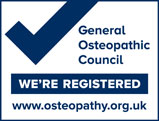Does working from home turn out to be a pain in the neck?
According to the Sunday Telegraph10/5/20 “working from home turns out to be a pain in the neck”.
According to Alan Nevies and his colleagues at northlondonosteopaths it does not have to be.
Some practitioners are reporting a rise in patients needing treatment for back and neck pains. They attribute this to the home environment not being suitable for working. During lockdown as more people have worked from home they have adapted sofas, kitchen tables, (in some cases ironing boards as well) to their work-day “desks”. These are often a very poor substitute for office environments with ergonomic desks and chairs, regular exercise in getting to and from work, and more space and movement within the office itself.
Alan Nevies and his colleagues at northlondonosteopaths are currently available for emergency consultations. However they offer the following practical advice to address the issues that may arise from the challenges of “WFH”.
Firstly, acknowledging that most work will be in front of some sort of screen ensure the centre of the screen is at eye level and ideally try to work from only 1 screen. If you must use more than 1 screen using a swivel chair is advised as it will enable you to go from one screen to another without putting stress on your neck.
Secondly in a “screen hierarchy” desktop screens are generally better than laptops, laptops are better than iPads, and iPads are better than a mobile phone. As the screen gets smaller our necks will be placed into more compromised postures (excessive flexion) and that may lead to dysfunction and pain in the neck.
Thirdly set your alarm to take regular breaks to walk around for a few minutes. Sitting in one position for hours on end will put the neck into positions of compromise and possible dysfunction. Simply said it is bad for you. Another benefit of taking regular breaks and coming back to your wfh desk is it will be easier to focus and be aware of your posture than if you just sat there for hours. As well as helping your musculo skeletal system your creative brain will thank you.
Fourthly here are some suggestions to help you stretch your chest and strengthen your upper back. Alan Nevies and his colleagues at northlondonosteopaths have identified a common pattern of dysfunction seen in office workers. This involves a shortened chest muscles and weak upper back muscles. The result of such posture can round the shoulders and cause pain. Alan Nevies and his colleagues at northlondonosteopaths suggest the following two exercises to stretch the chest:
Firstly stand with your hands placed on the back of your neck so that your elbows are bent and pointing to the sides. ( see picture).
Pull the elbows back while keeping your hands on the back of your neck till a stretch is felt In the chest.
- Hold this for 20-30 seconds.
- Repeat 3-5 times.
- It is important to ensure your back is straight and your core engaged.

Secondly place arm on a door post bent at the elbow to 90 degrees. The foot nearest the arm being stretched should be slightly further back than the foot furthest from the arm. (A good way to achieve this is using the door sill as your reference point. Have the near foot behind the door sill and the far foot in front of it )
Now while keeping your core engaged, place arm as illustrated below. On the door post lunge forward using your legs till you feel a stretch in the chest.
- Hold for 20-30 seconds
- Repeat 3-5 times both sides.

Please feel free to contact us at northlondonosteopaths or call Alan Nevies on 0208 4583874 if anything is unclear.
Meanwhile stay safe and well and pain free.


